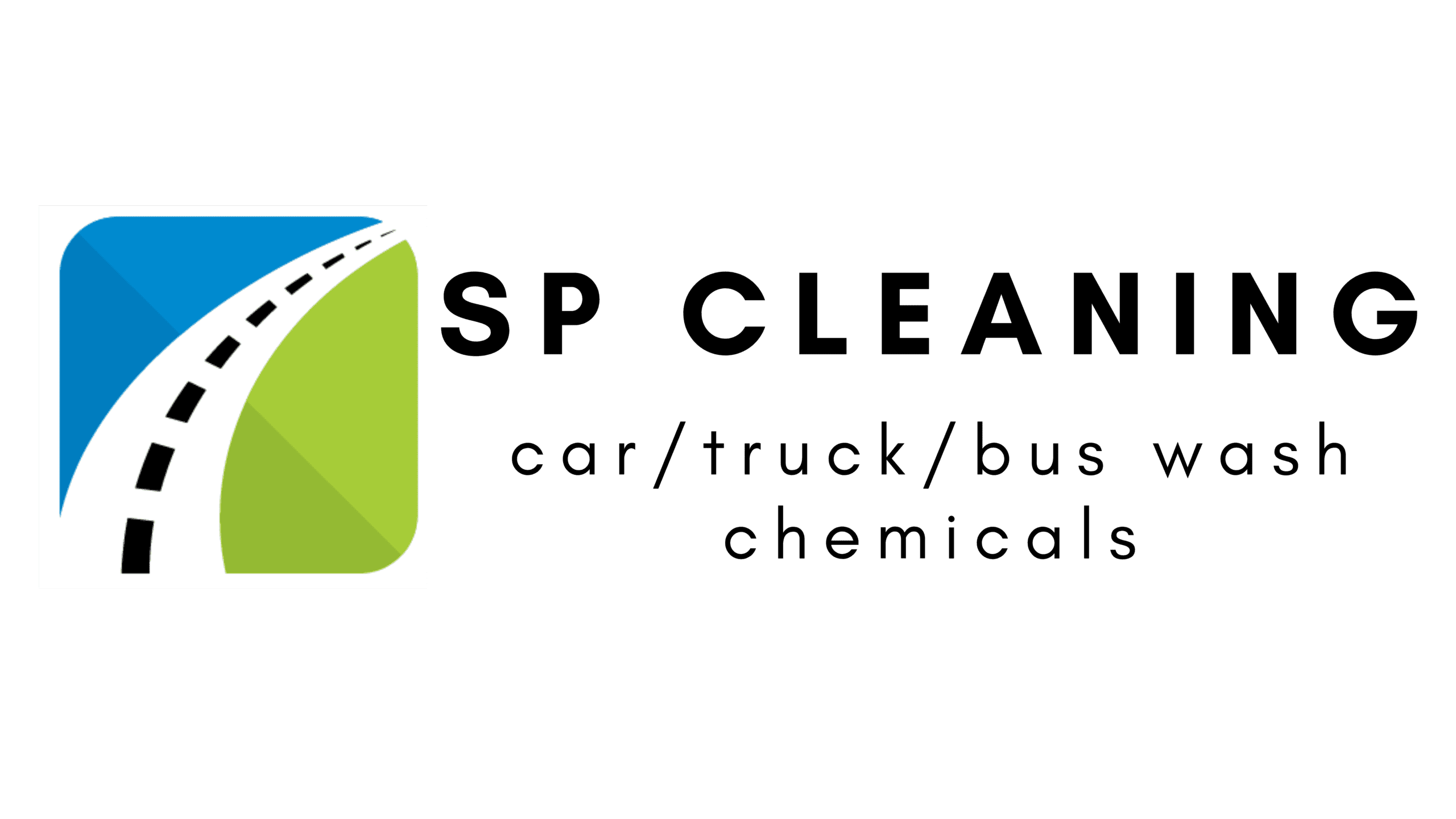When pricing pressure washing services, consider service types, surface complexity, size, and accessibility to guarantee accurate estimates for profitability.
Tailor prices are based on different areas and surface types to maximize revenue. Evaluate overhead costs, material expenses, and equipment maintenance for precise pricing.
Adjust rates seasonally and analyze market trends for competitive pricing. Factor in special conditions like extreme weather or unique circumstances for fair pricing.
Finally, review and update prices regularly to optimize profits and maintain quality service. Make sure your pricing strategy aligns with your business goals and remains competitive in the market.
Key Takeaways To Price Pressure Washing Services
- To Price Pressure Washing Services consider service types, surface complexity, size, and extra services for accurate pricing.
- Then Tailor your pricing based on surface types, accessibility, and material considerations.
- Other things to consider are equipment requirements, time constraints, and urgency for efficient pricing.
- Implement discounts, upsells, and value-added services for enhanced customer experience.
- Analyze costs, overhead expenses, and profit margins to set competitive and profitable prices.
1. Service Types and Complexity
When evaluating pricing for pressure washing services, consider the distinct differences between residential and commercial services.
Take into account the various surface types to be cleaned such as concrete, wood, or brick. Also, consider the size and accessibility of the area to be worked on.
Additionally, factor in any extra services that may be required like gutter cleaning or deck staining. This will provide a thorough pricing structure that reflects the complexity of the job.
Make sure to account for these key points to accurately determine the cost. This will ensure you offer a competitive price that aligns with the value of the services provided.
1. Residential vs. commercial services
Residential and commercial pressure washing services differ in complexity, requiring distinct pricing strategies and considerations. When pricing these services, it’s important to grasp the differences to guarantee accurate quoting. Here’s a comparison between residential and commercial pressure washing services:
| Categories | Residential Services | Commercial Services |
|---|---|---|
| Pricing Comparison | Usually lower prices | Often higher rates |
| Customer Preferences | Focus on curb appeal | Emphasize cleanliness |
| Competitive Analysis | More local providers | Potential for contracts |
| Profit Margins | Generally lower margins | Higher profit potential |
| Service Differentiation | Basic cleaning needs | Specialized equipment |
Understanding these distinctions will help you tailor your pricing strategies effectively based on the type of service you are providing.
2. Surface types (concrete, wood, brick, etc.)
To accurately price your pressure washing services for different surface types like concrete, wood, brick, etc., it’s essential to take into account the unique requirements and complexities associated with each material. When considering pricing strategies, surface compatibility, material considerations, cost analysis, and profit margins play a vital role in determining the pricing structure for your services:
- Pricing Strategies: Tailor your pricing based on the type of surface to guarantee fairness and competitiveness.
- Surface Compatibility: Understand how different surfaces react to pressure washing to avoid damage and deliver effective cleaning.
- Material Considerations: Factor in the cost of specialized cleaning agents or equipment required for specific surface types.
3. Size and accessibility of the area
Considering the size and accessibility of the area, assess the service types and complexities involved to determine an accurate pricing structure for your pressure washing services.
Area accessibility plays an important role in pricing, as difficult-to-reach areas may require specialized equipment and more time. Evaluate the equipment requirements based on the area’s size and layout to guarantee efficient service delivery.
Weather conditions impact the scheduling and effectiveness of the pressure washing service, affecting the time needed to complete the job. Meeting customer expectations is essential, so factor in any specific requests or additional services they may require.
4. Additional services (gutter cleaning, deck staining, etc.)
Evaluating the size and accessibility of the area will help determine the appropriate pricing structure for pressure washing services, especially when considering additional services like gutter cleaning or deck staining. To optimize your pricing strategies for these additional services, consider the following:
- Additional services bundling: Offer discounts or special rates for bundling pressure washing with gutter cleaning or deck staining.
- Upselling options: Suggest upgrades such as premium deck stain or gutter protection systems to enhance the customer experience and increase revenue.
- Value-added services: Provide complimentary services like exterior window cleaning or driveway sealing to add value and differentiate your offerings.
2. Select Pricing Model
When determining your pricing model for pressure washing services, consider options like:
- Hourly rates
- Square footage pricing
- Flat rates for specific services
- Bundled service packages
- Discounts or promotions
Tailor your pricing model to suit the needs of your target market and guarantee it reflects the value of the services provided. By offering a variety of pricing options, you can attract a wider range of customers and maximize your revenue potential.
1. Hourly rates
To establish competitive pricing for pressure washing services, consider incorporating an hourly rate model. When implementing this pricing strategy, follow these key steps:
- Calculate Costs: Factor in all expenses, including labor, equipment maintenance, and overhead costs, to determine your hourly rate.
- Determine Profit Margin: Guarantee your hourly rate allows for a reasonable profit margin while remaining attractive to customers.
- Analyze Competitors: Conduct a competitive analysis to understand the market rates and adjust your pricing strategy accordingly.
2. Square footage pricing
Consider implementing a square footage pricing model when determining the cost for pressure washing services. This strategy allows for a more accurate cost analysis by charging based on the actual size of the area to be cleaned.
By factoring in pricing strategies that reflect the competitive rates in the market, you can guarantee that your pricing is fair while maintaining healthy profit margins. Conduct a cost analysis that includes overhead expenses and material costs to establish pricing guidelines that provide value to customers.
For example: Driveway sealing costs $400 to $800 total on average for 400 square feet.
3. Flat rates for specific services
Implementing flat rates for specific services in the pressure washing industry guarantees transparent pricing and simplifies the cost estimation process for customers.
When setting flat rates, consider offering customized packages, specialty services, and premium options tailored to meet diverse customer needs. Additionally, incorporating add-on services can provide clients with the flexibility to choose extras as needed.
Moreover, exclusive deals on certain services can attract more customers and help establish loyalty. By structuring your pricing model around these elements, you not only streamline the pricing process but also create a clear and attractive pricing scheme that adds value to your pressure washing services.
Most pressure washers charge a $90-200 flat rate, depending on the job.
4. Bundled service packages
When pricing bundled service packages in the pressure washing industry, make sure to strategically combine complementary services that offer added value to customers. Customized packages, service combinations, tailored bundles, specialized deals, and personalized options can help attract clients seeking all-inclusive solutions.
By bundling services like driveway cleaning with house washing or roof cleaning with gutter cleaning, you provide convenience and cost-effectiveness. Tailoring bundles to meet specific customer needs showcases your flexibility and understanding of their requirements.
Offering specialized deals for combined services not only simplifies the pricing process but also encourages customers to opt for more extensive cleaning solutions. Providing personalized options creates a sense of exclusivity, making clients feel valued and more likely to choose your bundled packages.
5. Discounts, promotions and Marketing
To maximize customer engagement and retention, strategically incorporating discounts and promotions into your pricing model can enhance the perceived value of your pressure washing services. Consider implementing the following strategies:
- Customer loyalty: Reward repeat customers with exclusive discounts or special offers to encourage their continued business.
- Referral programs: Incentivize current customers to refer friends and family by providing discounts or bonuses for successful referrals.
- Seasonal promotions: Offer discounts or promotions during specific seasons or holidays to attract more customers and boost sales.
- Marketing: You will often run ads, perform SEO, and google ads
3. Estimate Material Costs
Cost estimation for pressure washing services involves detailed expense calculation, including material pricing for cleaning supplies and equipment upkeep.
For high quality cleaning you need pressure washing chemicals that will help you finish those jobs quickly.
As a Canadian chemical manufacturer we provide wide variety of pressure-washing chemicals, that will enhance your workflow.
You need to factor in the profit analysis to make certain that your pricing strategies are competitive yet profitable for you.
By considering these aspects, you can develop a pricing structure that covers all material costs while also allowing for a reasonable profit margin.
Understanding the pricing dynamics in the pressure washing industry will help you establish competitive rates that reflect the value of your services.
4. Account for Overhead Expenses
When setting your prices for pressure washing services, it’s important to factor in overhead expenses such as:
- Equipment maintenance costs
- Insurance premiums
- Cleaning supplies expenditure
- Office administrative expenses
- Utility bills analysis
These expenses are vital to take into account to make sure that your pricing covers all operational costs and allows for a profitable margin. By accounting for overhead expenses accurately, you can establish competitive yet sustainable pricing for your pressure washing services.
Add your labor, material, and overhead costs to get the total cost for the pressure washing job.
Here’s what calculating your total cost for pressure washing a driveway may look like:
- Square footage: 800 (20’ x 40’)
- Service cost: $240 ($0.30 per square foot x 800 square feet)
- Overhead cost: $8 ($4,000 ÷ 500 billable hours)
- Materials cost: $50 (pressure washer detergent and degreaser)
Total cost = $298
1. Equipment Maintenance Costs
Taking into account equipment maintenance costs is crucial when accounting for overhead expenses in pricing pressure washing services. Here are three key points to take into account:
- Regular Maintenance Strategies: Implementing a proactive maintenance plan for your pressure washing equipment can help prevent costly breakdowns and ensure smooth operations.
- Cost Breakdown: Analyze the expenses associated with maintaining your equipment, including repair costs, replacement parts, and any specialized tools required for upkeep.
- Equipment Investment: Factor in the initial investment made in purchasing high-quality equipment, as well as the ongoing costs needed to keep it in top working condition.
2. Insurance Premiums Consideration
Taking insurance premiums into account as part of your overhead expenses is vital when pricing pressure washing services. Insurance coverage is essential for protecting your business from potential liabilities that may arise during service delivery.
Premium considerations should take into account the type of coverage needed, such as general liability or workers’ compensation, to guarantee thorough protection. By investing in the right policy options, you not only safeguard your business but also enhance your credibility with clients by demonstrating a commitment to their safety and property.
3. Cleaning Supplies Expenditure
To accurately calculate the total cost of pressure washing services, it’s crucial to meticulously account for the expenditure on cleaning supplies and polishes as part of your overhead expenses. Here are three key aspects to take into account:
- Supply cost management: Implement efficient strategies to monitor and control the costs associated with purchasing cleaning supplies.
- Budget allocation: Allocate a specific portion of your budget towards cleaning supplies to guarantee you have an adequate stock without overspending.
- Expense tracking methods: Utilize reliable methods to track your expenses related to cleaning supplies accurately, helping you maintain transparency in your financial records while identifying areas for potential cost savings.
4. Office Administrative Expenses
To properly factor in office administrative expenses for your pressure washing services, make sure to meticulously account for all overhead costs related to running the administrative aspects of your business. When setting prices, consider pricing strategies, conduct cost analysis, and determine profit margins that encompass overhead expenses.
Establish pricing guidelines that reflect the total operational costs, including administrative expenses, to guarantee your services remain competitive in the market. By incorporating these elements into your pricing structure, you can maintain a healthy balance between covering your overhead expenses and generating a profit.
5. Utility Bills Analysis
Analyzing your utility bills is an important step in accounting for overhead expenses within your pressure washing business. When considering utility bills, focus on the following key aspects:
- Energy consumption: Evaluate the electricity or fuel usage specifically related to your pressure washing operations.
- Cost analysis: Conduct a detailed breakdown of your utility expenses to understand the impact on your overall budget.
- Efficiency comparison: Compare the efficiency of different pressure washing equipment or techniques in relation to your utility costs.
5. Determine Total Costs
Quantify all the overhead and material costs, including equipment maintenance, cleaning supplies, and insurance, to determine the total costs for pricing your pressure washing services effectively.
A thorough cost breakdown is essential to establishing a solid pricing strategy that incorporates profit margins while remaining competitive in the market.
Consider seasonal adjustments in your calculations to reflect varying demand and operational costs throughout the year. Additionally, conduct a competitive analysis to make sure your pricing aligns with industry standards and offers value to customers.
6. Set Profit Margins
When setting profit margins for your pressure washing services, always aim for a desired profit percentage that aligns with your business goals.
Be sure to factor in all costs and expenses, including labor, materials, equipment maintenance, and overhead, to accurately determine your pricing.
Adjust your pricing strategy as needed to meet your profit objectives while staying competitive in the market.
1. Desired profit percentage
To guarantee a successful pricing strategy for your pressure washing services, it’s imperative to establish your desired profit percentage as part of setting profit margins. Here are three key points to take into account:
- Profit Optimization: Determine the profit percentage that aligns with your business goals and guarantees sustainable growth.
- Competitive Analysis: Research your competitors’ pricing strategies to set a profit margin that’s competitive yet profitable.
- Customer Perception: Balance your desired profit percentage with how customers perceive your service value to maintain a loyal customer base.
2. Factoring in all costs and expenses
Establishing your desired profit percentage is essential when factoring in all costs and expenses to set profit margins for your pressure washing services. Begin by conducting a thorough cost breakdown, evaluating expenses such as labor, equipment maintenance, insurance, and cleaning supplies. Factor in all these elements when calculating your profit margins to guarantee a sustainable business model.
Utilize different pricing strategies, whether it be per square foot, per hour, or flat rate, to align with your budget analysis. Carefully consider your profit calculation alongside industry standards to stay competitive.
3. Adjusting pricing to meet profit goals
Begin by carefully examining your cost breakdown and profit margins when adjusting pricing to meet your desired profit goals for your pressure washing services. To guarantee profit optimization, consider the following:
- Review Pricing Strategies: Evaluate different pricing models such as per square foot, per hour, or flat rate to find the most profitable approach for your business.
- Conduct Cost Analysis: Analyze all expenses including equipment maintenance, supplies, and labor costs to determine a suitable pricing structure that covers your costs and allows for profit.
- Set Revenue Goals: Define clear revenue targets based on your business objectives and market conditions to guide your pricing adjustments effectively.
7. Evaluate Market Competitiveness
To keep up with the competition, it’s crucial to align your pricing strategies with the current trends in the pressure washing industry.
Think about how keeping your customers coming back and recognizing seasonal patterns can shape your pricing decisions.
For example, you might offer loyalty discounts during the quieter months to ensure your schedule stays full. When demand spikes, adjusting your prices can help you make the most profit.
| Emotion | Strategy | Expected Impact |
|---|---|---|
| Security | Loyalty Discounts | High Retention |
| Anxiety | Peak Season Pricing | Increased Sales |
| Relief | Flexible Payment Terms | Stress Reduction |
| Satisfaction | Quality Guarantees | Trust Building |
| Anticipation | Seasonal Packages | Repeat Business |
These strategies do more than just keep you competitive; they also foster a devoted customer base that feels genuinely appreciated and looked after.
8. Adjust for Special Conditions
Consideration of unique circumstances or specific requirements will necessitate adjustments in the pricing strategy for pressure washing services. When faced with special conditions, it is important to adapt your pricing accordingly. Here are some key factors to take into account and adjust for:
| Special Conditions | Pricing Adjustment | Explanation |
|---|---|---|
| Weather conditions adaptation | Increase prices during extreme weather conditions such as heavy rain or snow. | These conditions may impact the efficiency and effectiveness of the pressure washing service, requiring more time and effort. |
| Special equipment requirements | Add an extra fee for specialized equipment needed for certain surfaces or materials. | Unique equipment needs may incur additional costs that should be reflected in the pricing. |
| Hazardous material considerations | Implement a surcharge for handling hazardous materials and ensuring proper disposal. | Dealing with hazardous substances requires extra caution and expertise, warranting a pricing adjustment. |
9. Review and Revise Prices
To effectively manage your pressure washing business, regularly reassessing and adjusting your pricing strategy is essential for staying competitive in the market and ensuring profitability. When reviewing and revising your prices, consider the following:
- Price optimization: Analyze market trends and customer preferences to guarantee your pricing aligns with the perceived value of your services.
- Revenue analysis: Regularly review your revenue streams to identify areas where price adjustments could lead to increased profits without sacrificing quality.
- Profit evaluation: Evaluate your pricing structure to make sure it covers all costs while still providing a reasonable profit margin.
10. Frequently Asked Questions
1. How Can I Factor in Travel Time and Distance for Pricing?
To factor in travel time and distance for pricing, streamline your time management by considering distance calculation. Conduct competitive analysis to refine pricing strategies, ensuring customer satisfaction. Efficiently incorporate these factors to optimize service delivery.
2. Should I Offer Package Deals or Discounts for Recurring Services?
Offering package deals and discounts for recurring services can increase customer loyalty by up to 70%. Consider seasonal specials, referral discounts, bundle pricing, and service agreements to attract and retain clients while ensuring consistent revenue flow.
3. What Insurance Coverage Is Necessary for Pressure Washing Businesses?
For your pressure washing business, critical insurance coverage includes liability, worker’s comp, property damage, equipment insurance, and business interruption. Guarantee thorough protection to safeguard your business, employees, and clients from potential risks.
4. How Do I Handle Customer Complaints or Re-Dos in Pricing?
When managing customer complaints or re-dos in pricing, guarantee transparency and manage expectations. Emphasize quality control measures for customer satisfaction. Address concerns promptly, offer solutions, and adjust pricing as needed. Prioritize customer trust by resolving issues efficiently.
5. What Are the Best Practices for Pricing Add-On Services Like Roof Cleaning?
When pricing add-on services like roof cleaning, make sure equipment maintenance is factored into costs. Implement effective marketing strategies to upsell. Adhere to industry standards for pricing. Prioritize customer satisfaction. Continuously train employees to deliver excellent services.
Conclusion
To summarize, pricing pressure washing services requires careful consideration and strategic planning. By taking into account all expenses, utilizing industry standards, and conducting thorough market research, you can establish competitive rates that reflect the value of your services.
Remember, ‘the proof is in the pudding’ – offering quality services at a fair price will set you apart in a competitive market and position your business for success. Stay informed, adapt to market trends, and continuously review and revise your pricing strategy to guarantee profitability and growth.



